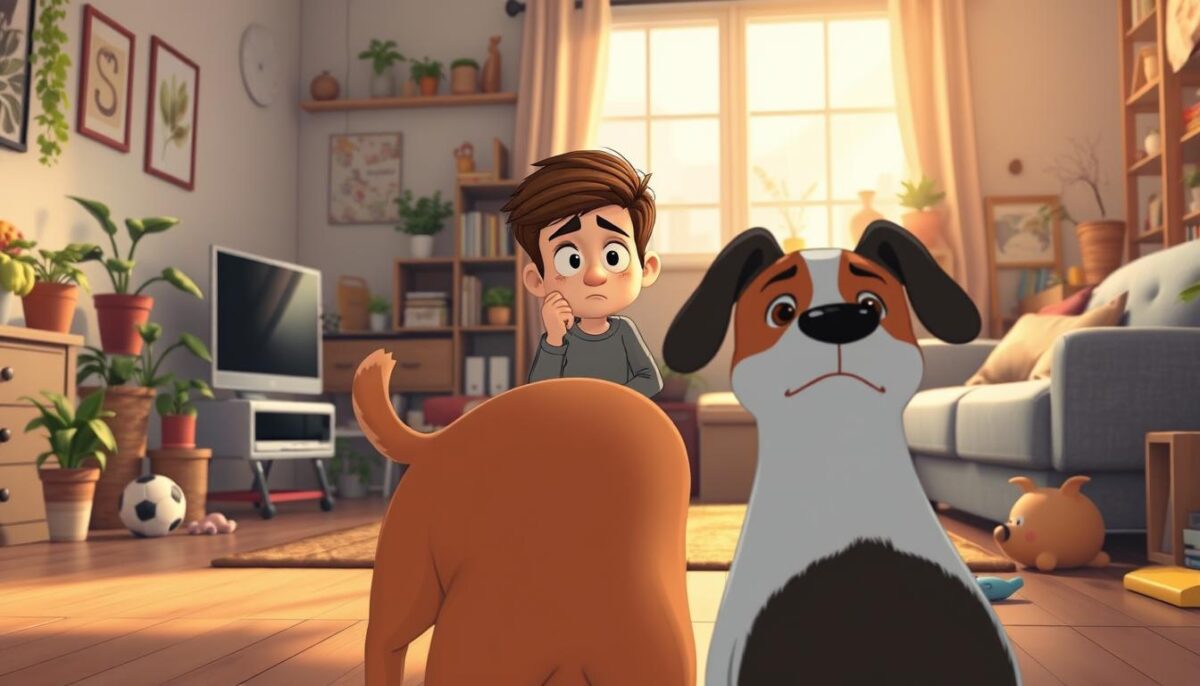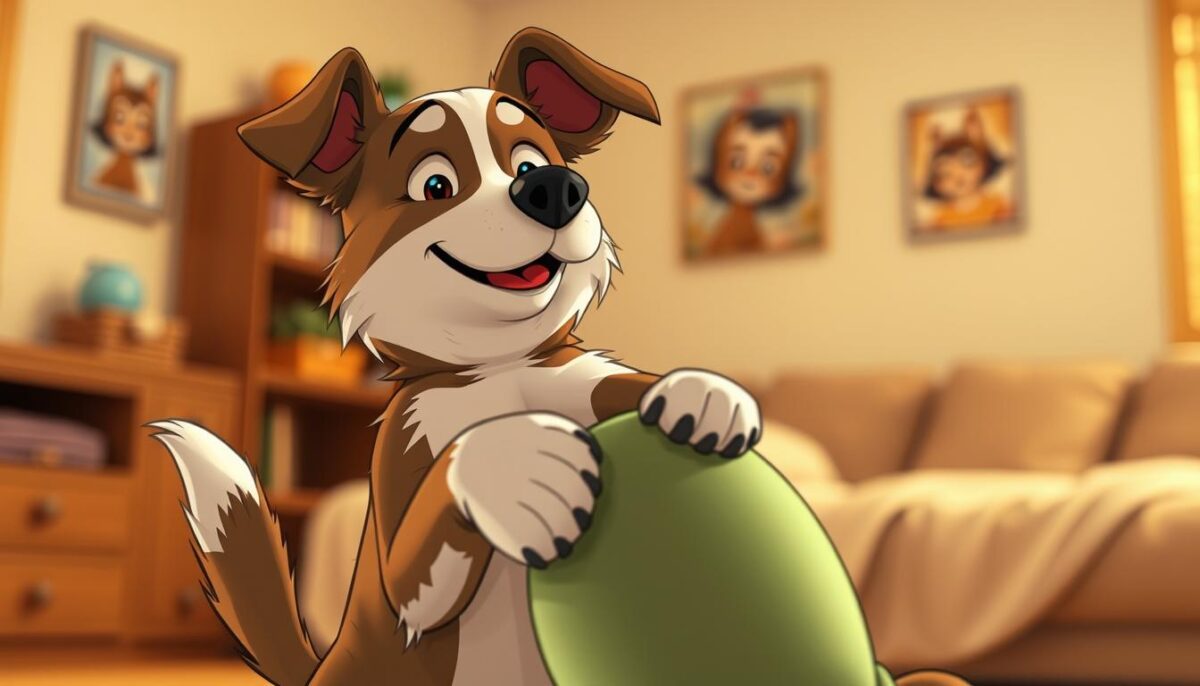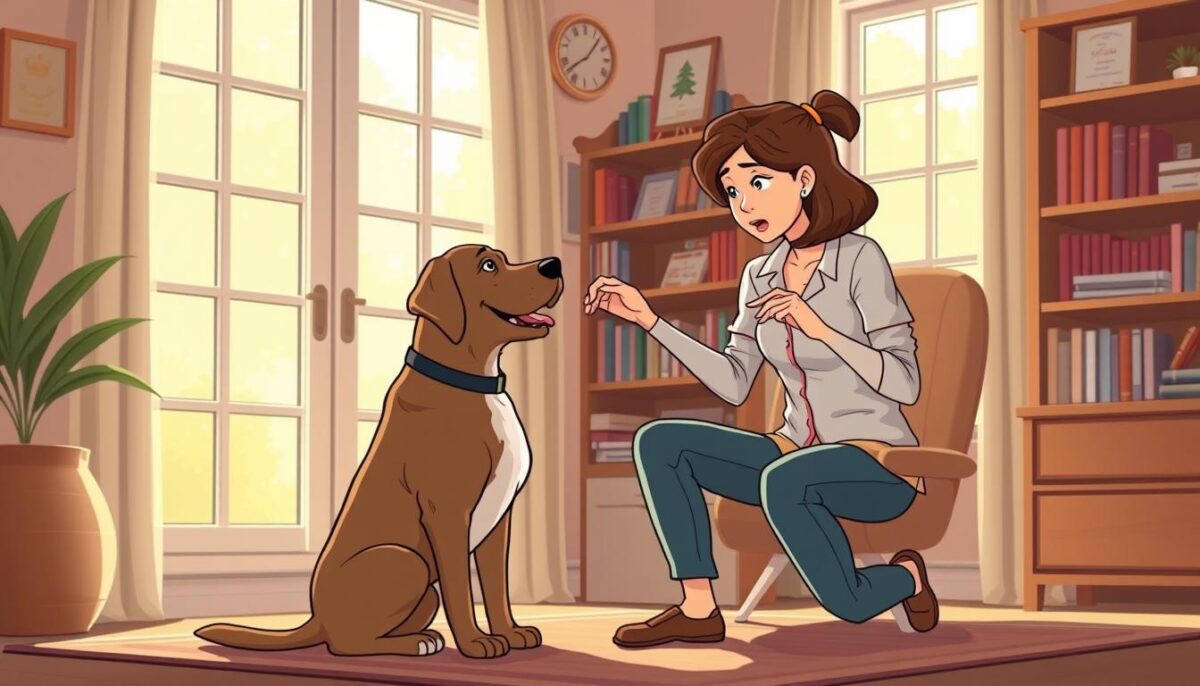
How to Stop My Cat from Peeing on Clothes? 7 Proven Solutions to Prevent Inappropriate Urination
May 14, 2025
7 Home Remedies to Get Rid of Dog Bad Breath Naturally (Vet-Approved Tips)
May 18, 2025Why Does My Dog Hump Everything? Causes and Quick Solutions
Dog owners often find themselves puzzled and sometimes embarrassed by their dog’s humping behavior. Whether it’s directed towards toys, other dogs, or even people’s legs, canine mounting can be a confusing and concerning behavior.
This behavior is not just a quirk; it’s a complex form of dog behavior. It’s influenced by instinct, anxiety, play, and even medical issues.
Understanding the underlying causes of dog humping is crucial. By recognizing the reasons behind this action, dog owners can take steps to manage and correct it.
Key Takeaways
- Dog humping is a complex behavior influenced by multiple factors.
- Understanding the cause is key to addressing the behavior.
- Medical issues can sometimes be a underlying reason.
- Training and behavioral adjustments can help manage humping.
- Professional help may be necessary in some cases.
Understanding Canine Humping Behavior
It’s important to know why dogs hump. This behavior can be caused by instinct, excitement, or even health issues.
The Science Behind Dog Mounting Behaviors
Dogs hump for many reasons. Instinct is a big one, as they come from a long line of pack animals. This behavior was once a sign of dominance or mating. Hormones, like testosterone, also play a part, especially in males. But, females can hump too.

Distinguishing Between Normal and Problematic Humping
Not all humping is bad. Some is just play or showing who’s boss at home. But, if it happens too much or with the wrong things, it’s a sign of a bigger problem.
| Characteristics | Normal Humping | Problematic Humping |
|---|---|---|
| Frequency | Occasional | Frequent or persistent |
| Context | Play or social interaction | Directed towards inappropriate targets or in inappropriate contexts |
| Triggers | Excitement, play | Stress, anxiety, or compulsive behavior |
Why Does My Dog Hump Everything? Causes and Quick Solutions
Dogs hump for many reasons, like hormones or stress. Knowing why they do it helps fix the problem.
Physical Causes: Hormones, Excitement, and Stimulation
Hormonal influences make some dogs mount. They also hump when excited or overstimulated, like during play.
Give your dog lots of exercise and mental stimulation. This can help them not hump as much. It’s because they’ll be tired and less excited.

Psychological Triggers: Stress, Anxiety, and Dominance
Stress and anxiety can make dogs hump. They might do it to feel better. Some dogs hump to show they’re in charge.
To solve this, you need to understand why your dog humps. Then, you can teach them new ways to act. This could mean less stress, managing who’s boss, or a more organized home.
Common Humping Scenarios and Their Meanings
Humping in dogs is complex and happens in many ways. It can be between dogs, with humans, or even with objects. Knowing why dogs hump is key for owners to help them.
Dog-to-Dog Interactions: Social Dynamics Explained
When dogs play together, humping shows who’s boss or is just fun. Watching how they act and move helps figure out why they hump.
Human-Directed Mounting: Why Your Dog Targets People
Dogs might hump people because they’re excited, anxious, or want attention. Knowing why helps fix the problem.
Object Fixation: Pillows, Toys, and Furniture
Some dogs get stuck on things like pillows or toys and hump them. It’s often because they’re bored, have too much energy, or it calms them down.

| Humping Scenario | Possible Meaning | Addressing the Behavior |
|---|---|---|
| Dog-to-Dog Interactions | Social dominance, play behavior | Observe context, manage interactions |
| Human-Directed Mounting | Excitement, anxiety, attention-seeking | Understand motivation, redirect behavior |
| Object Fixation | Boredom, excess energy, self-soothing | Provide stimulation, manage environment |
Age-Specific Humping Behaviors and Solutions
The age of a dog is key in figuring out why they hump. As dogs get older, their needs and behaviors change. This means we need different ways to help them stop humping.
Knowing about these age-specific behaviors is very important. It helps dog owners use the right dog training tips for their pet’s age.
Addressing Puppy Mounting Habits Early
Puppies mount as part of growing up and playing. But, we need to stop this early to avoid bad habits.
Start by giving them lots of play and exercise. Teach them good play habits and gently stop bad mounting. “Consistency and positive reinforcement are key when training puppies,” says a famous dog behaviorist.
“Consistency and positive reinforcement are key when training puppies.”
Managing Adult and Senior Dog Behaviors
Adult and senior dogs might hump for many reasons. This includes health issues, anxiety, or learned habits. We need to find out why and use dog psychology to help.
Adult dogs might need special training like desensitization. Senior dogs might need a quieter home to feel less stressed.

By understanding and fixing humping at different ages, we can make our dogs happier. And we can also get closer to them.
Step-by-Step Training Techniques to Stop Unwanted Humping
Training your dog to stop humping takes patience, consistency, and positive reinforcement. The right training strategies can help stop unwanted humping behavior.
Interruption and Redirection Methods
One good way to stop dog humping is interruption and redirection. Say “no” or “stop” calmly when you see it. Then, redirect their attention to a good behavior or toy.
The “Leave It” Command
The “leave it” command helps stop humping. Teach your dog to leave things alone. Start by placing a treat in front of them and saying “leave it.”
Positive Reinforcement Strategies
Positive reinforcement is key in dog training. Reward calm, non-humping behavior. Use treats, praise, and affection to make good behavior better than humping.
Establishing Consistent Boundaries
Consistency is key in training. Make sure everyone agrees on what’s allowed. Clear boundaries and consistent rules help your dog understand what’s expected.
To stop dog humping, be patient and keep trying. Use interruption, redirection, positive reinforcement, and consistent rules. This will help stop the behavior over time.
Follow these dog training tips to help your dog learn better habits. This will reduce unwanted humping.
Environmental Management to Prevent Humping
One of the best ways to stop humping is to control the things that make your dog do it. Changing your dog’s surroundings can help a lot. This can make unwanted mounting less likely.
Identifying and Eliminating Trigger Situations
The first thing to do is find out what makes your dog hump. Things like excitement, stress, and too much stimulation can be triggers. After you know what triggers it, you can try to avoid or lessen them.
If your dog humps when it sees other dogs, stay away from places with dogs. This can help a lot. Also, watching your dog in different situations helps you see what triggers it. Keeping a journal of when humping happens can help find the causes.
Creating a Structured, Calm Living Space
It’s important to make a calm and structured home for your dog. Having a routine for eating, exercise, and play is key. A routine helps lower stress and anxiety, which can cause humping.
Also, make sure your dog gets enough to do and play. Playing with interactive toys or exercising can help. By changing the environment and reducing triggers, you can change your dog’s behavior and stop humping.
Medical and Physical Solutions for Excessive Humping
Medical and physical solutions are key to stopping dogs from humping too much. By finding and fixing the reasons behind it, owners can help their dogs less hump.
The Impact of Spaying and Neutering on Mounting Behavior
Spaying or neutering helps dogs stop humping. This method lowers the hormones that make dogs want to mount. Studies show it can cut down on aggression and humping in some dogs.
A study in the Journal of the American Veterinary Medical Association found that neutering before 1 year old can really help. It makes male dogs less likely to mount and fight. But, it’s important to remember that spaying or neutering might not stop all humping.
| Procedure | Effect on Humping Behavior | Additional Considerations |
|---|---|---|
| Spaying/Neutering | Can reduce hormonal drive behind humping | Effectiveness varies; may not eliminate behavior entirely |
| Exercise and Physical Activity | Can reduce energy-driven humping | Regular, varied exercise is recommended |
Exercise and Physical Outlets for Energy Release
Exercise is vital for dogs to stay healthy and stop humping. Playing and moving around helps dogs use up their energy instead of humping.
Things like agility training, long walks, and playtime help a lot. Also, using puzzle toys and interactive games keeps dogs busy and happy, reducing humping.
When to Consult Professional Help
It’s important to know when your dog’s humping needs a pro. Some humping is normal. But too much or constant humping might mean there’s a problem.
Signs Your Dog’s Humping Indicates a Serious Problem
Look for signs that your dog’s humping is more than a quirk. These signs include:
- Aggression when trying to stop the humping
- Humping that doesn’t stop, even with training
- Humping that upsets the dog or others
- Other behaviors like too much mounting, anxiety, or being stuck on one thing
If you see these signs, it’s time to get help. Getting help early can stop the behavior from getting worse.
“The key to addressing problematic dog behavior lies in understanding its root cause. Professional guidance can be invaluable in this process.” – Dr. Jane Smith, Certified Dog Behaviorist
Working with Veterinarians and Certified Dog Behaviorists
First, see your vet to check for medical reasons for humping. If it’s not a health issue, a certified dog behaviorist can help.
| Professional | Role in Addressing Humping Behavior |
|---|---|
| Veterinarian | Checks for health problems, talks about spaying/neutering |
| Certified Dog Behaviorist | Creates special training plans for behavior problems |
Together, vets and dog behaviorists can help you fix your dog’s humping. For more dog training tips, look at pet behavior modification resources.
Building a Lasting Solution: Maintaining Your Dog’s Improved Behavior
Keeping your dog’s good behavior takes work and a big plan. To stop dog humping, keep using the training and environment tips we talked about.
Knowing how dogs think helps you spot and stop humping. Make sure your dog gets enough exercise and fun activities. This helps them behave better.
Make a routine with training, rewards, and a clear home. This helps your dog stay good and strengthens your bond.
Being consistent and patient is important for a well-behaved pet. Follow the tips in this article for a better life with your dog.
FAQ
Why does my dog hump everything, including pillows and furniture?
Is humping a sign of dominance in dogs?
Can spaying or neutering stop my dog from humping?
How can I stop my dog from humping other dogs?
What are some effective training techniques to curb dog humping?
Can environmental changes help prevent dog humping?
When should I seek professional help for my dog’s humping behavior?
How can I maintain my dog’s improved behavior after addressing humping?
If you’re looking to learn more about embarrassing pet problems such as inappropriate urination, poop-eating, or odd behavior, these trusted blog articles offer expert insights and helpful solutions:




